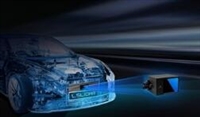
Flash solid state lidar is a new type NTJD4001NT1G Laser radar technology, which uses solid-state lasers and single photon sensor arrays (SPAD) to achieve high-resolution target detection and tracking. However, the resolution of the current SPAD array is limited, so a higher resolution SPAD array is needed to further improve the performance of the lidar.
SPAD array is a kind of photodetector array based on single photon sensor. It consists of many single photon sensors, each of which can detect the arrival of a single photon. SPAD arrays are commonly used in time dependent single photon counting (TCSPC) applications, such as laser radars.
The resolution of the current SPAD array is limited, one of which is the pixel size. The pixel size determines the spatial resolution of the array, that is, the minimum target size that can be resolved. Generally, the smaller the pixel size, the higher the spatial resolution. However, reducing the pixel size will increase the noise level of the sensor, thus reducing the signal to noise ratio (SNR). Therefore, when designing a higher resolution SPAD array, it is necessary to balance the spatial resolution and SNR.
Another limitation is the size of the array. The current SPAD array is usually composed of tens to hundreds of sensors, which limits the overall resolution of the array. In order to improve the resolution, the size of the array needs to be increased, but this will increase the cost and complexity, and may lead to increased power consumption. Therefore, it is necessary to solve the problem of size expansion when designing a higher resolution SPAD array.
In addition, the response speed of SPAD array is also a challenge. Because the laser radar needs to scan and detect targets quickly, the SPAD array needs to have high-speed response capability. The response speed of the current SPAD array is limited, which cannot meet the requirements of high-speed laser radar. Therefore, it is necessary to develop faster SPAD arrays to support high-speed lidar applications.
In order to solve the above problems, there are several directions for research and improvement. First, we can reduce the pixel size by improving the process technology of SPAD array, thus improving the spatial resolution. For example, sub wavelength lithography technology can be used to produce smaller pixels. In addition, the material and structure of the sensor can be improved to improve SNR. For example, new semiconductor materials and enhanced photoelectric conversion mechanisms can be used.
Secondly, the resolution can be improved by increasing the size of the array. At present, some researches are exploring the use of 3D stacking technology to achieve higher resolution SPAD arrays. 3D stacking technology can stack multiple sensor layers on the same chip, thus increasing the size of the array without increasing the area of the chip.
Finally, the response speed can be improved by improving the circuit and architecture of the SPAD array. At present, some researches are exploring the use of new circuits and architectures to achieve faster SPAD arrays. For example, a faster signal reading circuit and a time to digital converter (TDC) can be used to improve the response speed.
In conclusion, in order to achieve a higher resolution SPAD array, we need to improve and study the pixel size, array size and response speed. This will help promote the development of Flash solid state lidar technology and further improve the performance and application range of lidar.

